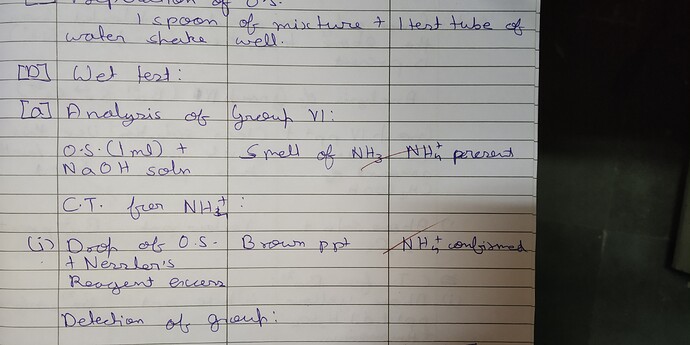Great write-ups ![]()
![]() @pratittodkar
@pratittodkar
It would only be true if hydrogen combines with elements with high electronegetivity difference than it. Hence forming always forming polar molecules and hence all reduced molecules have smell. But I don’t think that is the case since I haven’t read anywhere about something like that.
Though I agree many reduced compounds have smell but so does Nitric Oxide which has a sweet smell.
True, oxidized compounds have smell, but which smell ? is it plesant smell or foul smell?
Most of reduced compounds i mentioned have unplesant smell, eg, H2S, NH4, CH4
While i tend to think that oxidized compounds dont have such unplesant smells. @pratittodkar
As different compounds have different smells , can v list down the possible compunds that could be present in our moina cultures…if really say nitric oxide is present in your culture so logically according to your statement too, you should get a sweet smell from your cultures…are you getting any such sweet smell from your culture ?
Not any sweet smell as such but it has a pungent smell like ammonia, and as discussed earlier, ammonia is present in our cultures due to the presence of ammonifying bacteria.
We can’t really identify any particular smell. Because:
- We are allowing our bottles to throw out that smell since we are not capturing it.
- The chemicals are going to be formed in very trace amounts.
- In such a huge mixture it is impossible for our receptors to smell anything particular unless it’s quite dominant which won’t be the case due to the above reason.
Is ammonia harmful for moinas ? If there is too much of ammonia present in moina cultures what will happen ? @drishtantmkawale @pratittodkar what amount of ammonia could affect moina and in what terms would it be affecting ?
CH4 is odourless gas. C3O2, is a foul-smelling oxidized compound
So according to this ,the moinas should not be having any problem as the chemicals producing are in less amounts. But then why suddenly there comes a point where the number of moinas starts to decrease ? Or is it that after some time the amounts of these chemicals increase which thus result in decrease in number?
Ammonia is harmful to moinas. In fact, any compound in excess is harmful to the moinas.
Too much of ammonia can cause their death. As ammonia causes burns to the gills of the freshwater organisms. That is why moinas in old cultures do not survive.
What amount is harmful isn’t determined yet.
What if we determine if it ???
Suppose if we have started a new bottle culture and every day keep checking ammonia levels of that bottle through simple qualitative analysis and observe daily. When you will start noticing that moinas in the bottle are started decreasing that day’s ammonia levels are harmful to moinas .
What say about this ?
Are there any simple qualitative analysis for detection of ammonia present in a water sample ?
We are going to do that but I am thinking of one single experiment done in collaboration which will monitor the following things.
- Oxygen levels
- pH of water
- Ammonia levels
- Bacteria levels ( After we decide how to do it)
- Growth rate of Moina
- Any other factors that we can use to determine waste levels ( example: as @drishtantmkawale told turbidity )
Then we can make a model that can predict growth rate depending on this variables. We just input the conditions and get the growth rate.
Ya there is we do it all the time at our practicals in college.
Well ,so share it please to everyone…why to keep it up to yourself.
![]() I don’t plan on keeping it to myself I just didn’t had the book at that time.
I don’t plan on keeping it to myself I just didn’t had the book at that time.
Sorry for the crude handwriting.
@pratitodkar pls spell out and explain what is there in the note you shared, so that it will help us to begin with a clear plan
Well this is the test that we use to identify the Ammonia radical from the given salt mixture. This is the wet test here we make a solution of the salt mixture and 1 test tube of water ( I don’t know why 1 test tube?)
Then we do the analysis for checking if ammonia is present
[ A ] Analysis
Solution of salt mixture (Original Solution or O.S.) (1 ml) + NaOH soln
If the result NH3 smell is true then NH4+ is present.
Then we do the conformity test for ammonia radical:
drop of O. S. + Nessler’s Reagent in excess
If the result brown ppt is true then NH4+ is confirmed
What is the principle involved?
Why NaOH?
Why Nesslers reagent?
Please explain as it is also in your syllabus, it can be done by you in college from your cultures
NaOH goes under double displacement reaction and NH3 is released with the formation of water and a compound containing Na and negative radical with which NH4+ was bonded

